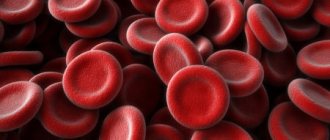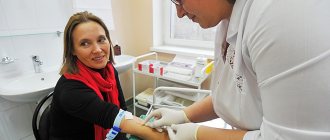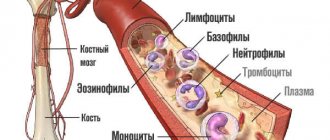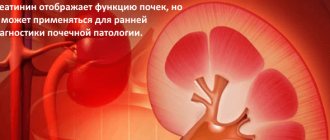An analysis of blood plasma coagulation is a fairly important examination, which helps to determine the cause of a number of serious diseases.
It helps prevent the formation of blood clots or bleeding in a timely manner. PTI (prothrombin index) is an indicator of blood plasma clotting; the Kwik standard ranges from 95.0% to 105.0%. The norm in the female body is from 78 percent to 142 percent.
PTI consists of the protein molecule prothrombin, which is the precursor of thrombin molecules, and takes an active part in the formation of blood plasma thrombosis.
This protein is synthesized by liver cells with the help of vitamin K. If the body has low vitamin K, then the production of prothrombin is reduced, and bleeding may occur in the woman’s body.
When should a prothrombin index test be done?
A woman needs to do a clotting test:
- Before surgery,
- In the case of a medicinal course of taking anticoagulants, in order not to provoke the formation of blood clots,
- During the period of bearing a child,
- For varicose veins,
- In patients who experience problems with blood plasma clotting,
- In case of pathology of the heart and blood flow system,
- With a lack of vitamin K,
- For liver disease cirrhosis.
Analysis for prothrombin index
Technology for passing technical technical training for women
Before undergoing a laboratory test for the presence of prothrombin, using the method of determining the prothrombin index, a woman needs to prepare for blood sampling:
- Blood samples from women for this analysis are taken on an empty stomach and no later than 11 a.m. It would be ideal if the woman ate food the night before (but not late). The last meal should be 12-14 hours before blood sampling. In this case, the PTI indicator will be the most correct,
- One day before taking the test, do not eat fatty foods that are prepared by frying in a frying pan. Do not eat sour and pickled foods,
- Do not drink alcoholic beverages,
- At least one hour before blood collection, do not smoke,
- The use of medications affects the level of prothrombin in the blood, therefore, when taking medications in a course, it is necessary to postpone this test until the end of the drug therapeutic course. If the analysis needs to be done urgently, then you need to warn the doctor what medications you are taking at the time of blood sampling,
- Venous blood is taken for testing.
What is INR?
This indicator is the standard for determining blood clotting. The INR value responds to the activity of certain blood proteins, which are coagulation factors. Such proteins are produced in the liver with the participation of vitamin K. These coagulation factors respond to medications - indirect anticoagulants, for example, Dabigatran, Warfarin or their analogues. In this case, hypocoagulation occurs, i.e. blood clotting occurs much more slowly. For some patients this is vitally important, many of them are forced to take anticoagulants for life.
PMI analysis indicator
Laboratory testing of prothrombin is most often prescribed to women over 50 years of age. With menopausal syndrome, a reorganization of hormonal function occurs, at this moment a restructuring occurs in the composition of the blood.
It is also necessary to do an analysis for women who have prolonged bleeding, as well as pathologies in the liver, and the presence of oncological tumors in the body.
There are indicators that are obtained when performing this blood test:
- The time at which blood plasma clots occurs is indicated in seconds; this indicator is prothrombin time,
- The prothrombin INR index is an index that is noted during anticoagulant therapy. This indicator is important for adjusting the medication course, blood thinning drugs,
- The Quick clotting level is the most common method of testing blood plasma to determine the amount of prothrombin. The presence of a substance in plasma is displayed in a diagram based on prothrombin time,
- The prothrombin index is a coefficient that reflects the correspondence of the normalized time of prothrombin molecules, as a percentage of the patient’s value.
Prothrombin index
PTI during pregnancy: normal
During pregnancy, all women are required to undergo a coagulation test. It includes:
- PTI (prothrombin index).
- INR (international normalized ratio).
- APTT (activated partial thromboplastin time).
- Fibrinogen.
All these parameters are extremely important. Thus, an increase in PTI in the last stages of pregnancy to 150% or higher may indicate the risk of placental abruption. And if this indicator decreases before childbirth below 80%, there is a risk of bleeding during childbirth or in the postpartum period. Thus, it is especially important to evaluate the coagulation system late in pregnancy. To do this, a PTI analysis is performed. The norm of this indicator during pregnancy varies from 90 to 120%.
Transcript of laboratory research
Blood test for prothrombin, interpretation displays all the necessary prothrombin coefficients and its norm:
- The normal prothrombin clotting time is from 9.0 seconds to 12.50 seconds,
- The INR norm is from 0.85 and the index is up to 1.15,
- The index rate according to Kwik is 78.0% to 142.0%.
A reduced index equals up to 77.0%, and a high index equals higher than 120.0%.
In men, the prothrombin index in blood plasma is the same as in women, from 95.0% to 115.0%.
Coagulogram coefficients
IndicatorNorm
| blood clotting (time) | 5,0 — 10,0 |
| kaolin time | 60,0 — 90,0 |
| thrombin time | 14, with a difference of 5 more or less |
| fibrinogen g/l | 2,0 — 4,0 |
| fibrinolysis | 150,0 — 240,0 |
| APTV | 0,80 — 1,10 |
| platelets | 180,0 — 320,0 |
| prothrombin index | 80% — 100% |
Description of the PTI index
What does a blood test show for PTI? The PTI index is the ratio of the period of time during which the patient’s blood clots to the period during which the standard sample clots. For convenience, the ratio is indicated as a percentage. The resulting figure is multiplied by one hundred.
Prothrombin plays a crucial role in the process of blood clotting. This specific type of protein is subsequently converted into thrombin, which makes up the blood clot.
As mentioned above, vitamin K is directly involved in the production of prothrombin, the deficiency of which disrupts protein synthesis, increasing the risk of bleeding.
It seems that the reader has received a comprehensive answer to the question: “Blood test for PTI - what is it?”
Etiology of low prothrombin protein levels
The Quick coefficient has been lowered, reasons:
- Lack of vitamin K in the body,
- Liver diseases,
- Genetic predisposition.
An increased percentage of prothrombin index occurs because:
- A person has problems with blood clotting, congenital in nature,
- Changes in heparin levels when taking anticoagulants,
- Vitamin K deficiency in the body
- Oncological neoplasms,
- Use in the treatment of antibacterial drugs that have a wide spectrum of action.
Vitamin K deficiency
Low prothrombin, what to do and how to increase it?
To increase prothrombin, you must follow a proper diet and use foods in your diet that can increase this protein in the body:
- Buckwheat,
- Animal fats
- Cabbage, red pepper,
- Bread,
- Smoked and pickled products,
- Beans and greens.
Coagulogram: interpretation
Basic indicators:
- Blood clotting time. It is determined by the time interval between the time when blood appears from the wound and the moment it stops due to the formation of a clot consisting of fibrin (a protein due to which blood clots form and blood clotting occurs). In a word, this indicator determines the efficiency of platelets.
- Thrombin time is the time during which fibrinogen is converted into fibrin. There may be several reasons for deviations from the norm. If the indicator is less than normal, there may be too much fibrinogen in the child’s blood. If the indicator exceeds the norm, this may be due to a genetic lack of fibrinogen or renal failure.
- Prothrombin index or PTI. When determining this indicator, the percentage ratio between the time during which plasma coagulation occurs in a healthy child and the same indicator in a sick child whose blood is being tested. The risk of bleeding increases if the reading is low. Vitamin K allows you to normalize the prothrombin index in a child.
- Activated partial thromboplastin time, or aPTT, is the time it takes for a blood clot to form when plasma combines with various substances, such as calcium chloride. If there is a lack of vitamin K in the child's body or with renal failure, the aPTT rate will increase sharply.
- Fibrinogen concentration shows the content of 1 g of fibrinogen in 1 liter of blood. A low rate, compared to the norm, indicates liver disease. A high indicator indicates that the child may have acute infectious diseases, cancer, or malfunction of the thyroid gland.
- Thrombotest allows you to see how much fibrinogen is in the blood plasma of a sick child. To do this, a certain amount of blood and calcium chloride are mixed in a test tube. After a certain time, the reaction results in the formation of a clot. At normal plasma fibrinogen concentrations, the clot will occupy the entire tube.
- Fibrinolytic activity is an indicator that determines how long it takes the blood to independently dissolve the formed blood clot. Fibrinolysin, which is capable of breaking down a blood clot, is responsible for this process. If the analysis shows that the blood clot disintegrates faster than normal, the child has increased bleeding.
- Activated recalcification time or AVR is the time during which, under conditions of standardization with kaolin, plasma coagulation occurs under the influence of calcium chloride introduced into it.
- If the test result shows a shorter time than normal, the possibility of thrombophilia should be considered. As the recalcification time increases, there is a possibility of severe blood loss as a result of heavy bleeding.
- Soluble fibrin-monomer complexes or SFMC - the time during which fibrin grains appear in the blood plasma after the addition of o-phenanthroline. This indicator is a kind of marker of blood clotting in blood vessels.
- Plasma tolerance to heparin shows the amount of thrombin in the child’s blood. It is determined by the time it takes for a fibrin clot to form in the blood plasma after heparin is introduced into the blood. An increase in time relative to the norm indicates liver disease. If the time during which a fibrin clot forms in the blood is less than normal, a test should be conducted to detect cancerous tumors or diseases of the cardiovascular system. A decrease in tolerance time is possible during pregnancy or in the postoperative period.
- Fibrinogen is a substance that is synthesized by the human liver. Under certain conditions, it is converted into another substance - fibrin, which is involved in the formation of blood clots.
A reduced amount of fibrinogen in the blood is possible with:
- hepatitis or cirrhosis of the liver;
- failures in hemostasis;
- with a deficiency of vitamins B and C in the body;
- when taking fish oil and anabolic steroids.
Increased fibrinogen levels are possible after:
- previous surgical interventions;
- heart attack or stroke.
Also, a high amount of fibrinogen is possible with infectious diseases, pneumonia or burns.
Fibrinogen B - this indicator should not be present in the blood of a healthy child.
The duration of bleeding according to Duke determines the time to stop bleeding from the capillaries. To do this, a special lancet is used to puncture the finger to a depth of 4 mm. Then, carefully, using a strip of paper, a drop of escaping blood is removed from the finger and the time of appearance of the next drop is recorded.
Blood clot retraction - shows the percentage reduction of the blood clot with the serum that is released. As the indicator decreases, a decrease in platelets and an increase in red blood cells are observed.
PRP or Plasma Recalcification Time is a test to determine the clotting time of two types of plasma: citrate and oxalate. The reagent is calcium chloride. The shorter the recalcification time, the more hyperactive the hemostasis.
Prothrombin in the blood is high
According to the Kwiku method, prothrombin protein is high and exceeds 150.0%.
Reasons for the increase:
- DIC syndrome,
- Fibrin deficiency
- Genetic predisposition,
- The use of drugs from groups: coagulants, antibacterial agents, heparins, as well as laxatives.
You can reduce the level of prothrombin in the blood with the help of a diet with a maximum content of foods that have a blood-thinning effect:
Oatmeal porridge,- Tomatoes, tomato juice, and beets,
- Use olive oil
- Use apple cider vinegar
- sour fruits,
- Fish, omega 3 fat.
Prothrombin increased treatment. Anticoagulants are used to reduce prothrombin.
Prothrombin index in a woman during pregnancy
During pregnancy, the doctor prescribes a prothrombin test without fail. This study is carried out in order to avoid heavy bleeding during the birth process, as well as to prevent the formation of thrombosis at the time of birth.
If the prothrombin index is reduced during pregnancy, then there is a high probability of bleeding during labor. In this case, the pregnant woman needs to take coagulants to increase blood clotting.
If the prothrombin index is higher than normal, then anticoagulants are prescribed, which can reduce blood clotting.
In the results of laboratory testing, the prothrombin time coefficient also plays a fairly important role.
Based on the analysis data, the doctor can prevent all sorts of difficulties that can occur during the labor period for a woman:
- Prevent excessive blood loss
- Avoid hemorrhagic shock due to hemorrhage,
- Prevent complicated pregnancy in the form of early termination (miscarriage),
- Prevention of anemia during pregnancy.
Therefore, this laboratory test (prothrombin index) is very important during pregnancy, and identified discrepancies with the norm can be corrected before the birth process.
Norm of prothrombin in women during pregnancy
The prothrombin index in women during pregnancy increases and amounts to 90.0% 120.0%. This depends on the hormonal changes in a woman’s body during the period of conceiving a child.
Laboratory testing of PTI during pregnancy must be carried out at least twice. It is ideal to carry out the analysis 4 times, at different times during the child’s intrauterine development.
Particular importance is attached to the result of this analysis in the third trimester of pregnancy, when there is little time left before the birth process. It is important to track the dynamics of prothrombin levels in a woman.
When the percentage rises to a factor of 150, this level of prothrombin brings danger to the fetus (placental abruption).
Lower than 90.0% is labor and postpartum heavy bleeding.
If a woman has a malfunction in the prothrombin index coefficients during intrauterine gestation, then it is necessary to be observed in a hospital until the moment of birth.
How can a woman’s prothrombin level be normalized during pregnancy?
In order to bring the value of prothrombin molecules back to normal, you must adhere to proper nutrition and diet:
- The menu should be dominated by fresh vegetables, garden herbs and fruits,
- Liquids must be drunk in sufficient quantities, which includes purified water and natural juices,
- Dishes with a liquid consistency should be included in the menu.
If this dietary culture is followed, the prothrombin index in women will remain within normal limits.
Cost of blood coagulation analysis in children
Currently, a very large number of clinics provide coagulogram testing services. Such an analysis is carried out in any hospital located near your home, which has the necessary equipment and reagents for the analysis. The cost of a basic coagulogram package varies in Moscow from 700 to 1300 rubles. It is possible to conduct an advanced analysis, which examines additional indicators of the blood coagulation system. In this case, the cost of a coagulogram will increase to 3,500 rubles.
Donating blood for a coagulogram in children is most often prescribed in the following cases:
- Before surgery. Timely identified pathologies in the blood clotting system can eliminate problems with bleeding and blood loss and even save the life of a small patient.
- If your child bleeds frequently. This could be nosebleeds or bleeding from wounds that cannot be stopped for a long time.
- If you suspect hemophilia or other similar diseases associated with blood clotting disorders.
Do not forget that only a doctor should decipher the analysis. When deciphering the result, the specialist not only compares the obtained indicators with the norm, but also takes into account a number of related factors. The results obtained from a coagulogram will help identify autoimmune, inflammatory and vascular diseases.
Kwik's method
Laboratory testing of blood plasma according to Quick is done to further study the condition of liver cells and the functioning of the digestive system.
This analysis is carried out according to Quit in the following situation:
- Blood plasma clotting is impaired,
- Pathologies in the liver,
- Thrombosis,
- Blood oncology,
- Lack of vitamin K in the body.
Norms of prothrombin index by age:
- From 0 years to 6 years of age 80.0% -100.0%,
- From 6 years old to 12 years old 79.0% -102.0%,
- From 12 calendar years to the 18th birthday 78.0% 110.0%,
- From adulthood to 25 calendar years 82.0% 115.0%,
- From 25 years to 45 years 78.0% 135%,
- From 45th birthday to 65th birthday 78.0% 142.0%.
The normal percentage for women and the normative percentage for men are the same in all age periods of life.
The normal prothrombin time in children is 14.0–18.0 seconds.
For adults, this coefficient ranges from 10.0 to 15.0 seconds.
Decoding of the reduced PTI
Normal PTI values indicate that a person is healthy and has a good blood clotting rate.
Any deviations from the norm of PTI in a blood test are a significant cause for concern, as they indicate pathological processes in the body or a high probability of their occurrence.
If, as a result of a blood test, the PTI indicator is underestimated, then the body becomes prone to bleeding. In addition, this fact indicates insufficient blood thickness.
INR technique
INR (international normalized ratio) is a special technique that allows you to determine the final result of the prothrombin index. This technique is used in the international healthcare system, its use is especially important during pregnancy for women and children.
The formula for calculating INR (INR) = (patient's prothrombin time divided by normal time) x 100.
Based on the results of this technique, the doctor sees how effectively the therapy is carried out and how positive dynamics occur.
INR coefficients:
- Norm 0.85 1.15,
- When treating pathologies of the blood flow system, then the norm can reach a coefficient of 3.0.
Prothrombin in the blood very often increases in women and men after 45 years of age, which is associated with hormonal age-related changes.











